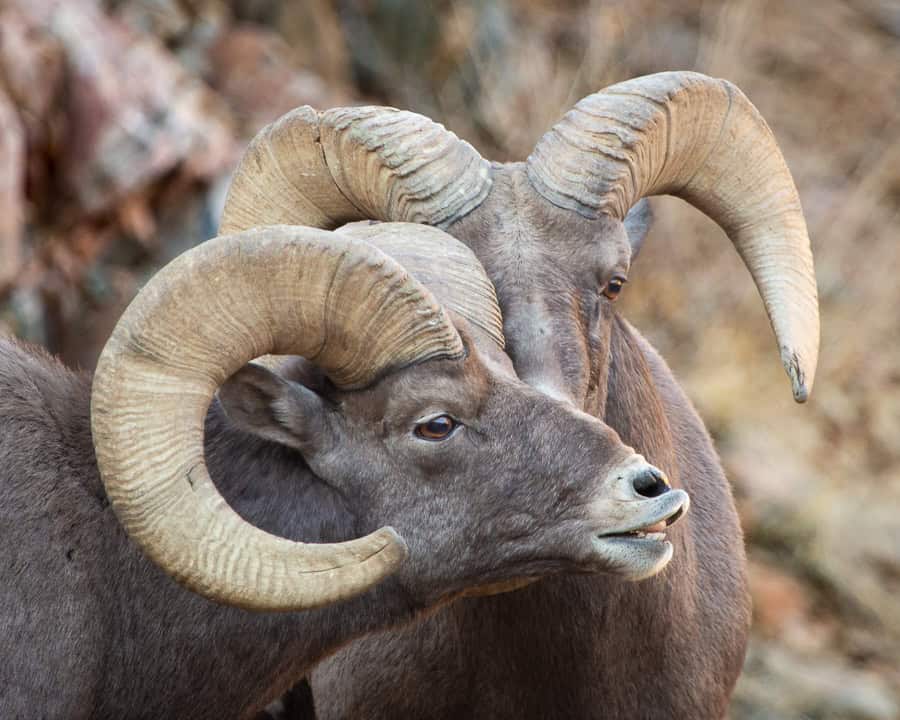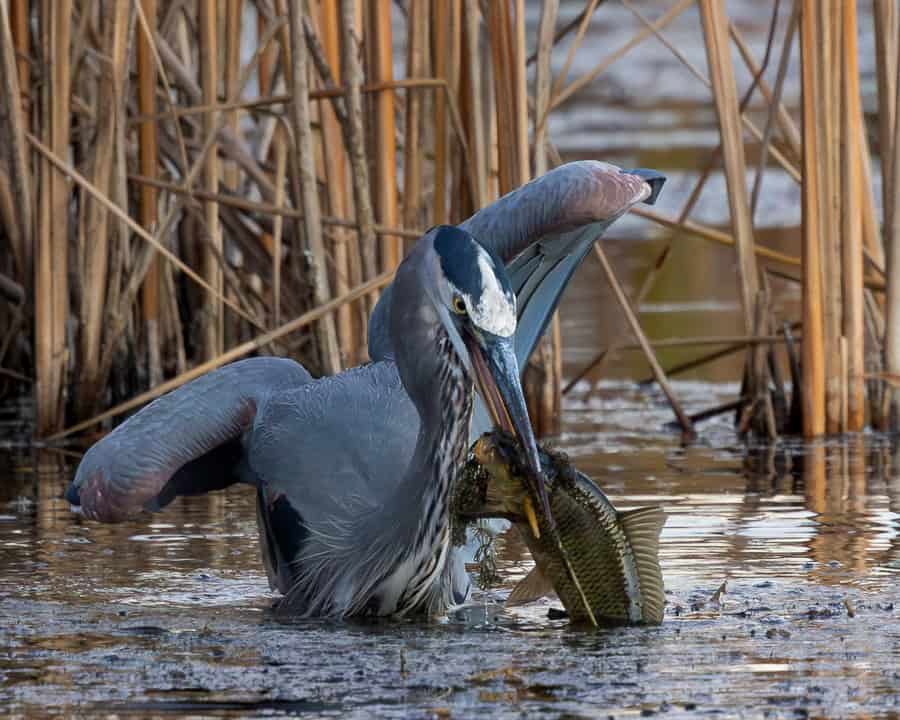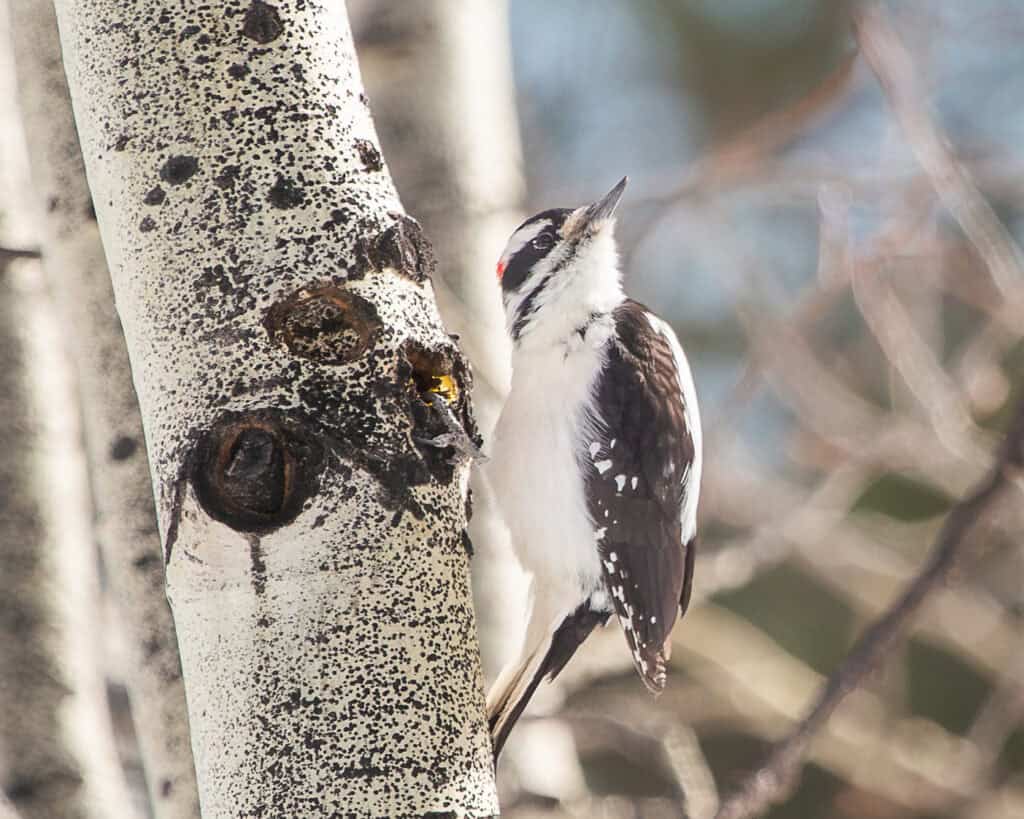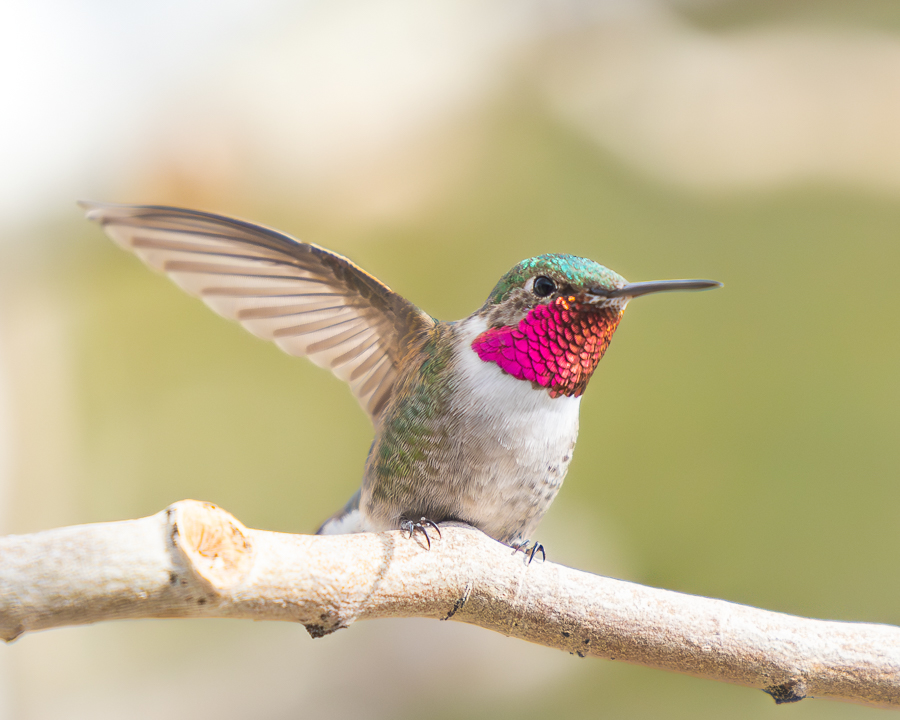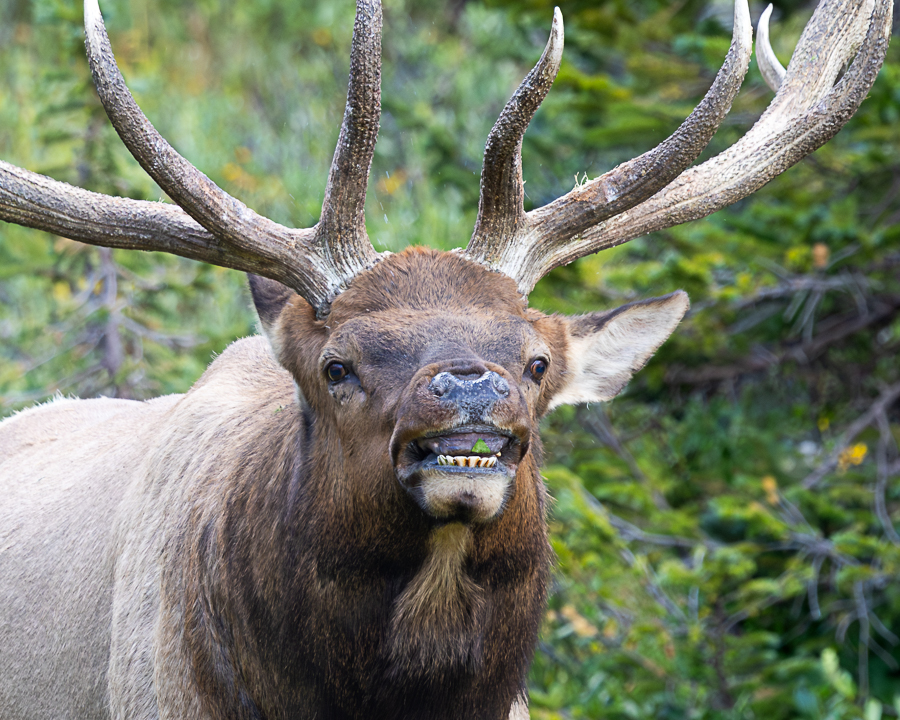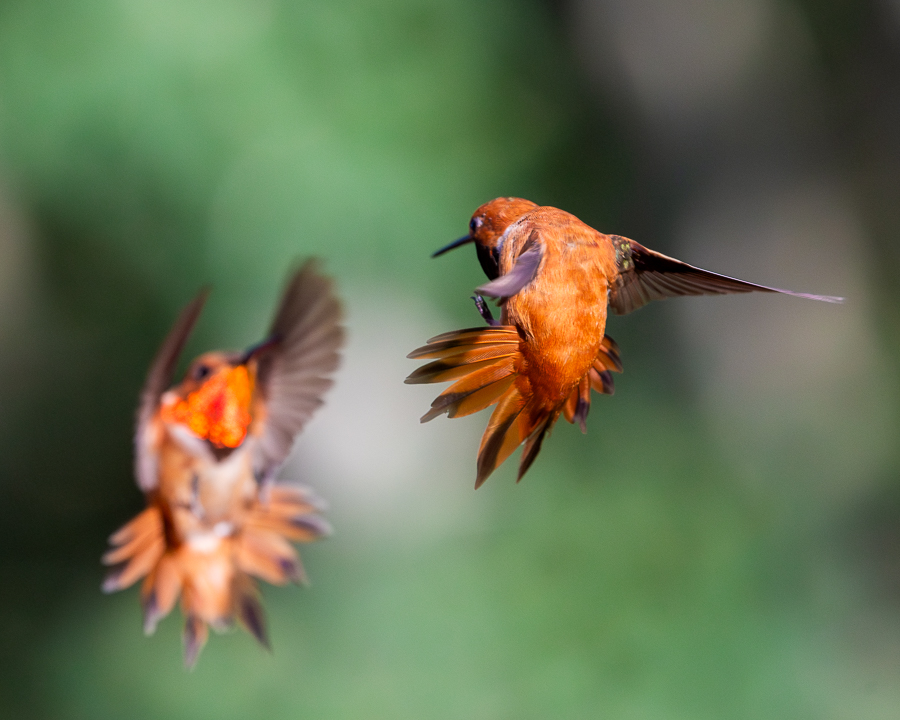Dispelling the sensationalism of elk sparring behavior with a dose of reality
Getting involved in various events selling my nature photography provides me with many opportunities to talk about the work, animal behavior, and the stories behind the images. One image has drawn great discussion and a need for clarity both on social media as well as at events. The image is of two bull elk, face-to-face with antlers seemingly intertwined. With the elk rut still ongoing I thought I’d use this week’s article to clear up some common misconceptions that the image invokes.
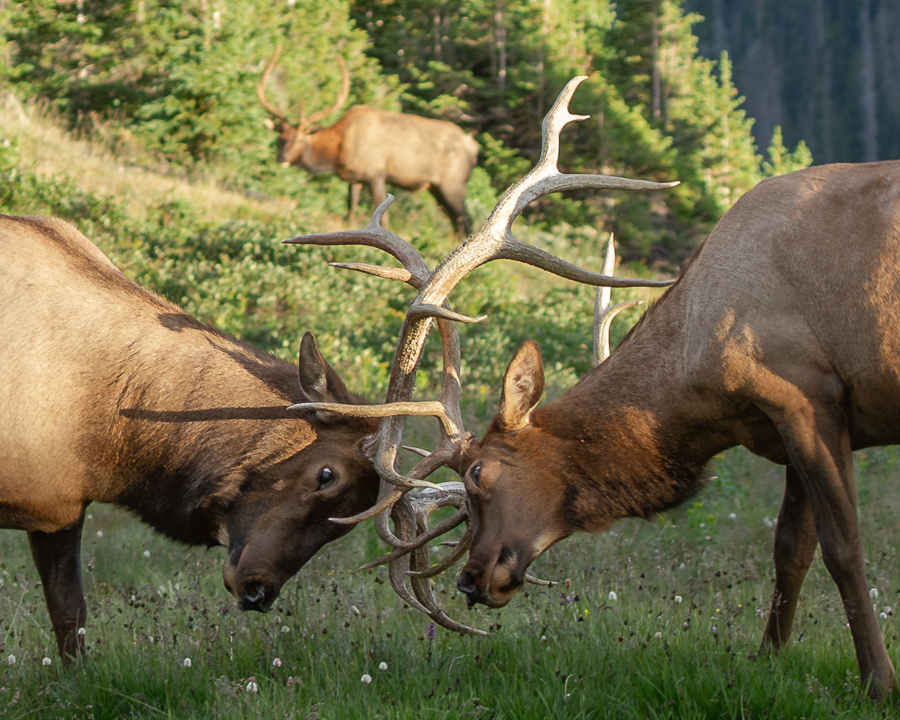
Watching bull elk during the rut is a spectacular natural event to witness. These great beasts strutting about their harems, chasing off possible contenders and bellowing out their iconic bugle is quite a primal and powerful display to observe. Nature-related television shows and the more far-reaching internet and social media proliferation of natural drama create a belief that intense combat is a common behavior.
The reality is that while the drama provides entertainment and generates clicks, these ferocious encounters are rare in the grand scheme of all that comprises the rut. While fighting certainly does take place, most altercations tend to simply be brief displays of dominance where a winner is determined rapidly. I have had the opportunity to witness one real “battle royal” (though sadly I was too far from the two giants to capture any worthwhile images), and it was a stunning and awe-inspiring experience. That said, one battle in years of observing the rut does not quite equate to the ranks of “common”.
Antlers do get broken, and injuries do occur. This year there are images and videos of one of the Estes Park town bulls who has a 6-inch tip of an antler tine embedded in his neck. These things are understandable, as the rut causes changes in a bull’s brain chemistry that increases aggression dramatically. This is why it is stressed endlessly to give them (and any other male member of the deer family) additional space during their prospective rut season. They are not to be underestimated, they are dangerous, and they do fight, but the frequency of intense and prolonged combat engagements is low.
Another common statement about the image is “I hope they don’t get stuck together!” This is spurned by another over-dramatized situation that is shocking (thus getting extra coverage and generating clicks) but is also a rare occurrence. The entangling of antlers does happen. In fact, one would think that fighting one another with “head ornaments” comprised of multiple curved spears would create far more entanglements than what really occurs, especially with the frequency of sparring that takes place. However, as with grand battles, entanglement is quite rare.
I’ve written about it before, but sparring is quite common with elk throughout the annual duration of a set of antlers. From the time the velvet comes off in August until the antlers themselves come off in late winter and early spring, the boys (and men) square off quite a bit. The reasons are varied but typically attributed to herd dominance. Often a bull will instigate a challenge by approaching another, displaying his head lowered. These encounters are usually brief, with a bit of pushing each other about until one of them loses enough ground and capitulates, usually accompanied by vocalizing submissive mews.
There are also instances where these encounters come across as practicing, as seemed to be the case on the evening when I captured the image that has inspired so much discussion. As I observed the small bachelor herd newly shorn of antler velvet, one of the youngest approached one of the eldest (likely an actual father/son dynamic) with submissive mews and a lowered head. I couldn’t fathom it had anything to do with a dominance challenge, as they were clearly vastly different in stature. It came across as though he was saying “Hey Pops, can you show me some moves?”
After a few moments of what seemed to be pleading by the younger, the elder broke from his graze and obliged. What happened next was quite surprising. There was initially no pushing whatsoever. They spent 15 minutes or more simply changing head positions as though the eldest was showing the younger how to engage without poking an eye out or becoming entangled. Eventually they moved from basic posturing to actual pushing, but there was no real aggression shown, as again, the elder was close to twice the size of the younger.
As the pair became more involved in their engagement, it seemed to inspire the others to square off as well, and next thing I knew, 3 different pairs of bulls were mewing, grunting and pushing each other about. Having just lost velvet, it was likely the first time they’d gotten to spar with the new antlers, and they seemed to be reveling in celebration of the season. A brotherhood, likely familial in nature, not out to hurt but simply to practice their moves and the possible safety thereof for when life and seasonal change might bring them into actual conflict.
For those concerned about the bull with an antler in his neck, by all accounts he seems to be acting as though nothing had happened. I have a friend who enjoyed the company of this bull literally in his yard for a few days and stated the same. I would imagine the energy of the rut and his own hormonal drives have kept his mind elsewhere. It is hard to say how he’ll fair through the winter, but the tine will eventually work its way out, and if he has the energy to heal, I’m sure he’ll do just fine and be back at it again next year.
Originally published in The Mountain-Ear

